Triortan
Triortan (lit. "Fireworks" or "Pyrotechnics" in Iuxat) is a High Rostran abstract strategy game with a long and storied history. Triortan is with board games as Vyozha is with card games in terms of the breadth of its international reach.
History
Evidence of Triortan as it is understood today dates back to the 7700's, and rumors persist that it was invented by Vexan Zin alongside the torches and small fireworks that would control his hot air balloons' flights. It is known that the late inventor was familiar with the game and played it extensively starting in his thirties, which does lend some credence to the fact that the game was least contemporary with him. Older abstract strategy games, now mostly defunct, featured some of the mechanics found in Triortan but without the full set of pieces and without the unique terminology and aesthetics of the later game.
Triortan has spread throughout the Manifold Sky as a result of international cultural exchange facilitiated by airship travel. Among members of the Eyes of the Void, the game is known as Shooting Stars; it has also gained popularity with some members of the Church of the Unexpected dedicated to Cosmeon, Goddess of Cosmic Irony, but this has more to do with the senary nature of the game's aesthetic and its status as a game that has traveled from afar in the packs of explorers and tradesmen. In its native Rostran Archipelago Confederacy, the game is largely devoid of such religious connotations, instead being viewed mostly through the lens of a popular mode of competition between people on the basis of percieved cunning or intellect.
Execution
At the beginning of play, all players enter into discussion to determine how many will be playing, whether all starting positions will be at the edges or corners of the board, and, if each player only starts with one pyrotech, whether that piece can use only its own gender's moveset or can use both movesets simultaneously. The players then arrange their pieces in the starting areas. Sparklers, firemasters, and firemistresses are placed first, as these placements are deterministic. Then, each player choses a number of other pieces from their supply to fill the remaining spaces behind their line of sparklers and arranges them on these spaces as they see fit.
The first player is determined at random, and play then progresses in a counter-clockwise fashion around the board. Each player takes turns moving a single piece under their control based on the moveset of that piece (see Components & Tools). A player can capture an opponent's piece by moving one of their own pieces into its square and removing it from the board. Each player's objective is to ensure that they have at least one pyrotech on the board while trying to capture all the pyrotechs of their opponents.
When a player no longer has any pyrotechs on the board or (more rarely) cannot make a legal move, they are eliminated from the game. An eliminated player can no longer make moves; their pieces may be captured as normal, but do not threaten any other spaces. The winner of the game is whomever is the last to be eliminated. Should the very rare condition arise where no remaining player can make a legal move, the game ends and whichever remaining player has captured the most pieces wins. A piece is only considered captured for the purpose of this scoring if it has been in play, has subsequently been captured, and is not currently back in play as a result of a sparkler reaching a back row (see Components & Tools).
Components and tools
The play space of Triortan is a hexagonal board that is partitioned into twelve equal files along each of the orthogonal to the edges of the board. Thus, the board is partitioned into triangular spaces into which the pieces may be placed. Traditional boards were permanent stone or tile constructions with the spaces delineated with incisions in the stone or grouting between tiles respectively, but modern boards are often thin wood or, increasingly, printed cardboard for portability purposes. Most spaces are all the same color, but stains or outlines may be used to show the starting areas of each player.
There are 99 pieces in a complete Triortan set, though two-player sets with 66 pieces are also common; some individuals choose to bring their own single-player set for expedience of play in public settings (see Observance). Pieces are often circular or hexagonal tokens made of colored glass, stone, wood, or (in modern times) plastic, each of which will be stamped with an appropriate icon on one side and a simplified illustration of its movement capabilities on the other. Less commonly - usually for permanently-installed sets or as tournament showcases - the pieces will instead by statuettes of Rostran figures casting forth 'spells' resembling the firework each piece is meant to represent.
A full set of Triortan pieces comes with multiple copies of every piece (see below) for each player. Individual players' pieces are distinguished by colors. Pieces are typically light blue, white, and light orange in referrence to the most common fireworks colors when the game was first created. Aside from the sparklers and pyrotechs (see below), a given player has discretion in terms of which pieces to use in a given game and their arrangement on the field; all other pieces to be used must fit behind the row of sparklers at the start of the game and cannot exceed a set number based on the piece's type.
The specific pieces included in an individual player's set include:
Short Fuse (max 2):
A short fuse piece can move across an edge, then across a vertex, threatening each space as it moves through it. A short fuse cannot jump, stopping if it encounters a board boundary or captures a piece. Short fuses can be used offensively to reach around corners and defensively to cover a larger area than other pieces. Somewhat ironically, a short fuse with room to move about threatens more squares than a long fuse does despite the name.Long Fuse (max 2):
A long fuse piece can move across a vertex, then across an edge, threatening each space as it moves through it. A long fuse cannot jump, stopping if it encounters a board boundary or captures a piece. long fuses can be used offensively to reach around corners and defensively to cover a larger area than other pieces. They also have a greater degree of reach than short fuses, but lack the ability to threaten pieces in spaces that directly share a side with them.Strobe (max 2):
A strobe piece can jump in the direction of one of its edges to a space with the same orientation two files away. This is also the same as moving across a vertex and then across another, different vertex without actually landing in the first space. Strobes have the benefit of improved reach and the ability to get past defensive lines, but cannot threaten any spaces within directly adjacent files, meaning that they can just as easily become caught out of position.Spinner (max 2):
A spinner piece can move in a fully circular arc across consecutive edges that share an endpoint with one of the spinner's spaces vertices. The spinner can stop at any time desired, when it successfully captures a piece, or when encounters a board boundary, but it cannot jump and cannot end its turn on the space it started from. Spinners are primarily defensive pieces owing to their wide coverage but relative slow movement across the board.Falling Star (max 2):
A falling star piece can jump over the space at an edge and land in the space across the vertex from the jumped space. This is a straight line, and a new space should be oriented the same way as piece's origin space. Falling stars are primarily offensive pieces, using their discontinuous movement to strike behind enemy defenses. Falling stars enjoy intermediate reach and the ability to jump over defensive lines, but cannot threaten pieces right next to them.Rising Star (max 2):
A rising star piece can jump over the space across a vertex from it to land in the space across the edge of the jumped space. This is a straight line, and a new space should be oriented the same way as piece's origin space. Rising stars are primarily offensive pieces, using their discontinuous movement to strike behind enemy defenses. Like falling stars, rising stars enjoy intermediate reach and the ability to jump over defensive lines, but cannot threaten pieces right next to them.Twister (max 2):
A twister piece can move across a vertex as far as desired in a straight line or until it captures another piece or reaches a board boundary. The resulting movement threatens squares in a successive A twister cannot jump. Twisters are primarily offensive pieces, using their speed and long reach to threaten distant locations on the board. Twisters have the benefit and drawback of having narrow avenues of attack, piercing some enemy formations while also being unable to threaten pieces mere spaces away. By moving a twister an odd number of spaces, it is possible to also change the directions in which it can attack on subsequent turns.Fountain (max 2):
A fountain piece can move across successive sides as far as desired in a straight line or until it captures another piece or reaches a board boundary. The resulting movement follows the axis of one of the origin space's sides, the edges of the path remaining parallel at all times. A fountain piece cannot jump. Fountains can be used for offense or defense, featuring wide coverage while also threatening opponents at a distance.Sparkler (max 15):
Sparklers are the slowest and least versatile pieces on the board, but they make up for these deficiencies by being the most plentiful overall. A sparkler can move only across a single edge during its turn, but cannot cross an edge directly towards its controller's home edge in an edge start game or board edges adjacent to the starting corner in a corner start game. Sparklers are always arranged in a chevron four ranks up from the player's home corner in a corner start game or in a line across the whole second rank from the player's home edge in an edge start game; extra sparklers may be selected for use as additional pieces. Sparklers are important for board control, preventing the movement of pieces by creating defensive walls. If a sparkler reaches an edge of the board opposite its controller's starting position, it may, at the player's discretion, be replaced with any of that player's pieces not currently on the board. Alternatively, instead of swapping the sparkler out, a new piece may be added to the board at an empty space at an edge of the board of the player's choice within their own starting are. The choice of piece includes both pieces not chosen for use in the current round and pieces which have been previously captured by opponents.Pyrotech/Firemaster/Firemistress (flat 1 for edge starting area, flat 2 for vertex starting area):
Pyrotechs are the most important pieces on the board because a player with no pyrotechs on the board is eliminated from play. The term 'pyrotech' is something of a modern invention, as the pieces are implied to have a gender distinction. Pyrotechs have different markings between the pair and are always placed all the way at the center rear of the player's area at the start of the game. When playing from corner starting positions, the player's right pyrotech is called the 'firemaster' and the left pyrotech is called the 'firemistress.' The firemistress is capable of moving across a single vertex, while the firemaster is capable of moving across a single edge. When playing from edge starting positions, in which case each player only has one pyrotech, each player may chose whether to employ the firemaster or firemistress at the start of the game; alternatively, should the players unanimously agree, this single pyrotech may use both movesets simultaneously. This latter option is often chosen in tournament play, as doing so makes the pyrotech more mobile and, therefore, makes the game more lengthy and challenging for all involved.Participants
Traditional Triortan requires between two and three players. Solitaire play entails setting up the board in an endgame state and, using the normal rules, forcing one or both of the players to concede in the minimum amount of moves possible. This style of play is closer to a logic puzzle in nature than to a true Triortan game, and scenarios ("problems") are sometimes set forth in newspapers and other publications as a way of testing the reader.
Observance
As a highly configurable and heretofore unsolved abstract strategy game, Triortan is widely regarded as an intellectual's pursuit. Professional players may carry around a set of standard-sized pieces sufficient for one player, enabling them to challenge others of this level wherever a board may be found. The Manifold Triortan League is an international governing body that oversees competitive Triortan play, with branches in every established nation under the Manifold Sky. At the opposite extreme, the game is somewhat beginner friendly, with predetermined arrangements of pieces allowing even children to pick up and enjoy the game.
As intellectual games, Triortan and Vyozha are often regarded as the social antitheses to sports like Terraceball or racing and especially full-contact sports like Mesa-Style Wrestling. The overlap between the Triortan and Vyozha player bases is significant, but not that between these games and other sports. One notable exception to this trend is the apparent three-way association between Triortan enthusiasts, Dexai as-Osang practitioners, and Esotericist clergy; Hierophant Tara Renko is a notable example of a person involved in all three activities simultaneously.
A standard Triortan board, with corner (thick) and edge (thin) starting areas delineated for three teams. In a two-player game, opponents are placed at opposite sides and have symmetrical play areas.
Important Locations
Related Organizations
Related Ethnicities

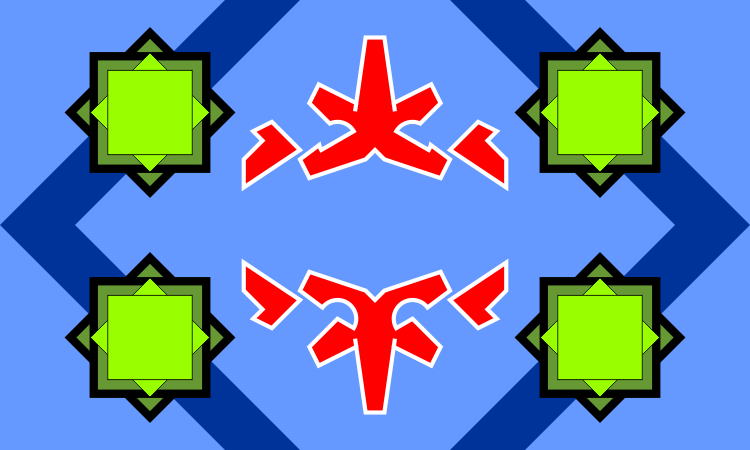
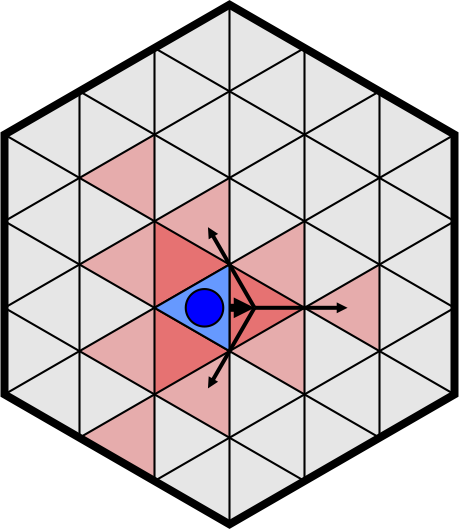
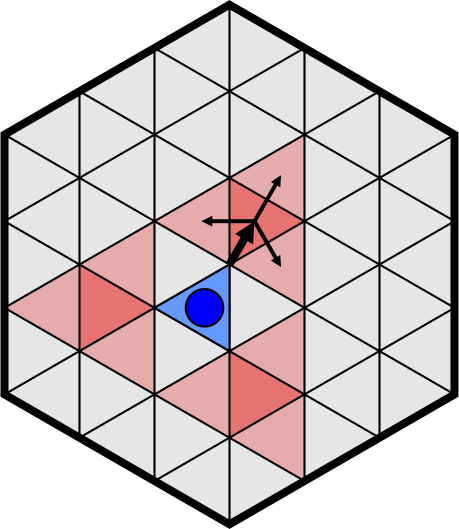
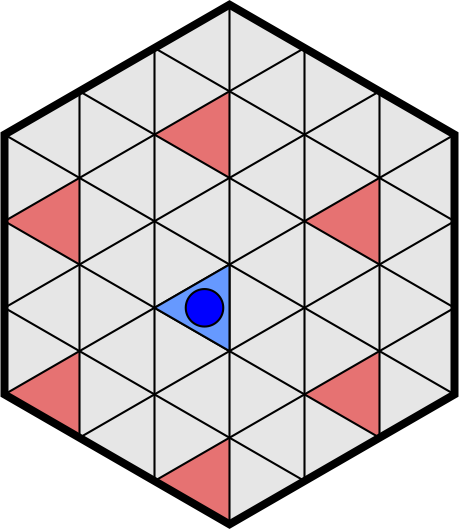
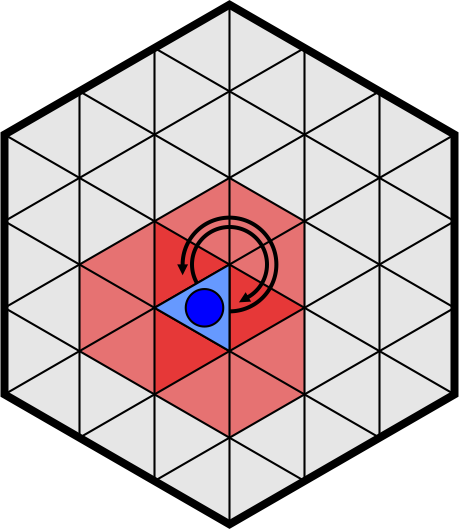
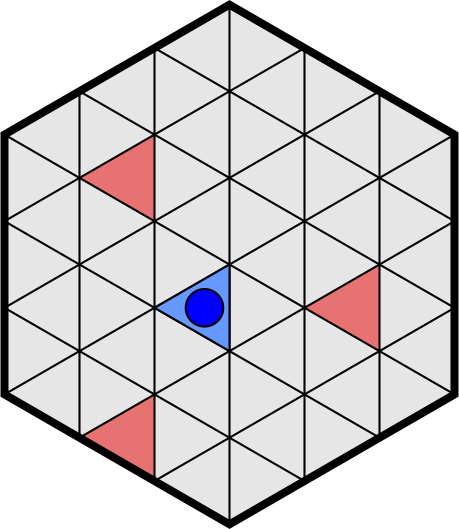
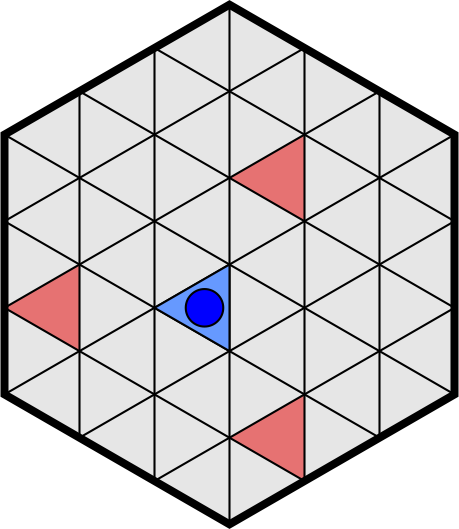
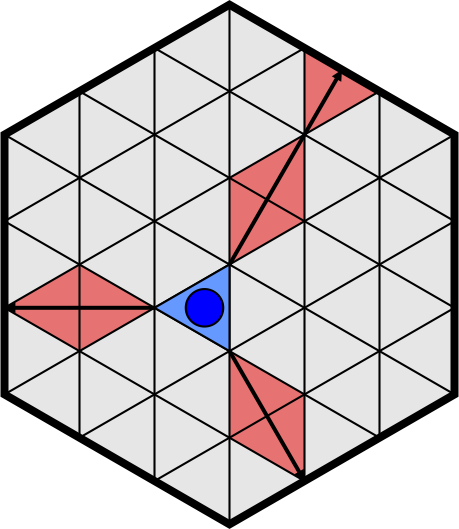
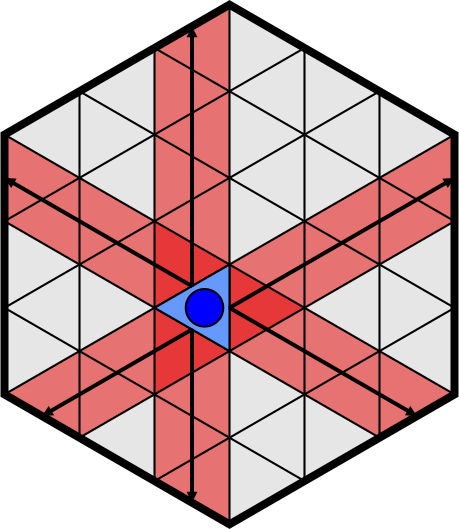
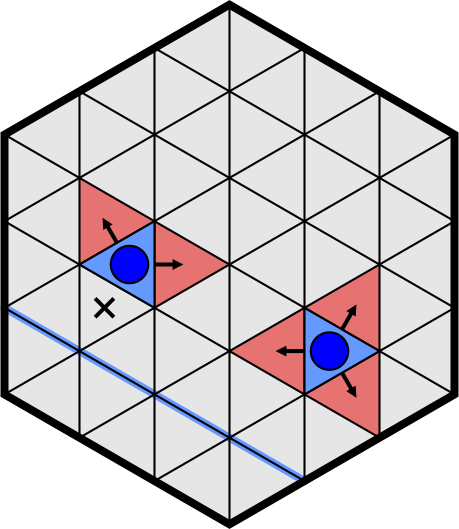
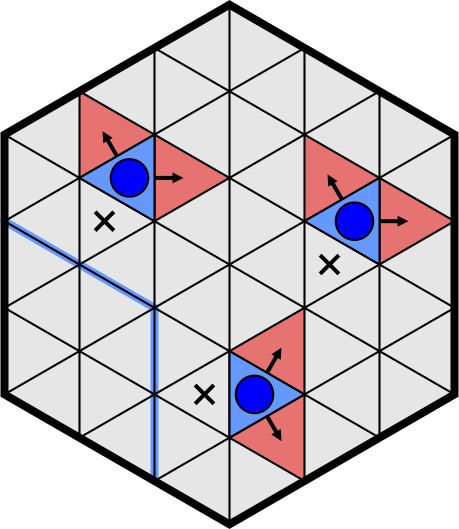

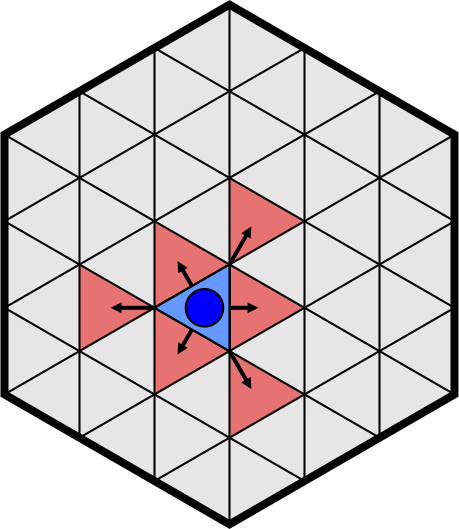
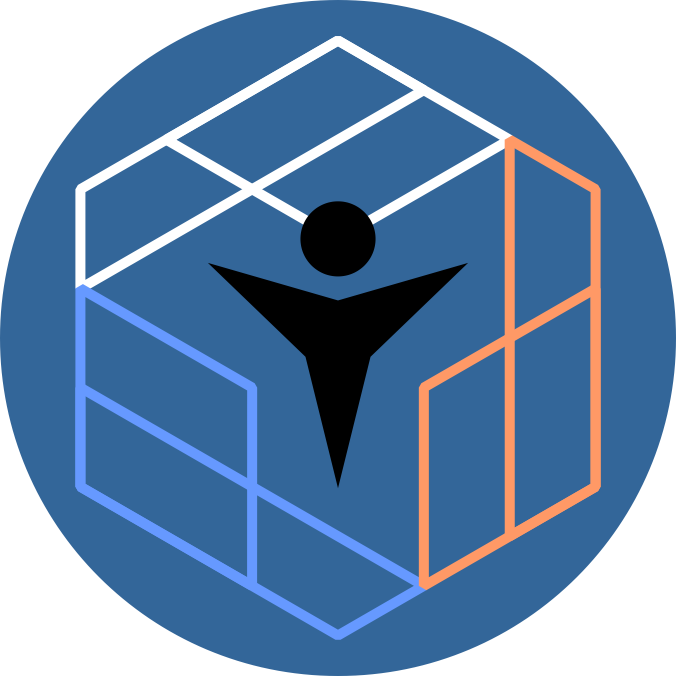
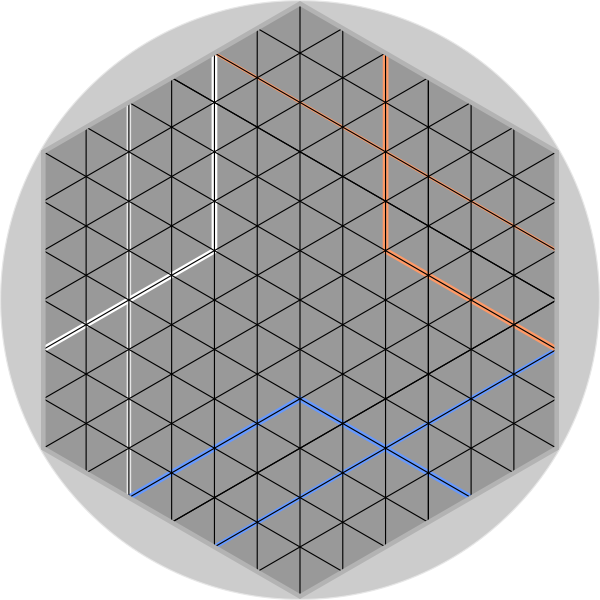



Comments